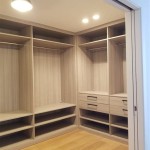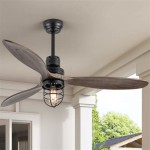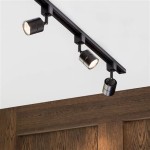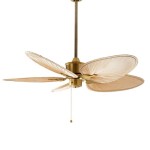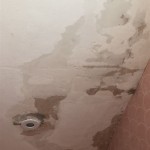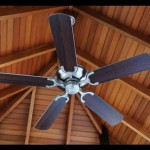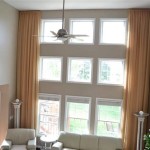Ceiling Fan Wiring: Understanding Two-Switch Configurations
Ceiling fans are a common fixture in many homes, providing both lighting and improved air circulation. While the installation process can seem straightforward, understanding the intricacies of wiring, especially when dealing with two separate switches, is crucial for both safety and functionality. This article will detail the wiring configurations for ceiling fans controlled by two switches, explaining the principles involved and providing a comprehensive guide to the process.
The purpose of utilizing two switches for a ceiling fan is to provide independent control over the fan's motor and the attached light fixture. This arrangement allows users to operate the fan without the light, the light without the fan, or both concurrently. This level of control offers flexibility and energy savings, particularly when only one function is desired. Before attempting any electrical work, disconnecting the power at the breaker box is paramount. Ignoring this step poses significant safety risks, including electric shock. A non-contact voltage tester should be used to confirm the power is indeed off before proceeding.
The complexity of a two-switch configuration stems from the need to route separate power feeds to both the fan motor and the light fixture. This necessitates careful identification of wires and proper connection techniques. Incorrect wiring can lead to malfunctioning components, tripped circuit breakers, or, in the worst-case scenario, electrical hazards.
Common Wiring Scenarios and Wire Identification
Several common wiring scenarios exist when dealing with ceiling fans controlled by two switches. The existing wiring in the house and the type of switches being used will dictate the specific wiring diagram to follow. The most prevalent scenario involves a single cable entering the ceiling fan box carrying the main power (line) and a neutral wire. Two separate cables then run from the ceiling fan box to the two wall switches. In this configuration, the line wire from the incoming power cable is connected to both switches, and the switched legs from each switch are then routed back to the ceiling fan to independently control the fan and the light.
Accurate wire identification is essential for a successful installation. Standard electrical wiring utilizes color-coded insulation to denote the wire's function. Black wires typically represent the hot or line wire, which carries the electrical current from the breaker panel. White wires usually represent the neutral wire, which returns the current to the breaker panel. Green or bare copper wires serve as the ground wire, providing a safe path for electricity in the event of a fault. Red wires are often used as switched legs, carrying power from a switch to a fixture. However, it's crucial to verify wire functions with a multimeter or voltage tester, as wiring conventions may vary depending on the age of the building and the electrician who performed the initial installation.
In older homes, the wiring may not adhere to current color-coding standards, making wire identification more challenging. In such cases, tracing the wires back to their source or using a continuity tester becomes necessary. A continuity tester verifies whether a complete electrical circuit exists between two points. This can be useful for identifying which wire is connected to which terminal on the switch or at the breaker panel. When in doubt, consulting a qualified electrician is always the safest course of action.
Another less common scenario involves two separate cables entering the ceiling fan box, each providing power to a dedicated switch. This configuration simplifies the wiring to some extent, as each switch has its own dedicated power feed and doesn't require sharing a single line wire. However, it's still crucial to correctly identify the line, neutral, and ground wires for each cable and connect them appropriately.
Step-by-Step Wiring Procedure for a Typical Two-Switch Configuration
After ensuring the power is disconnected at the breaker box and verifying the absence of voltage with a non-contact voltage tester, the wiring process can commence. The following steps outline the procedure for a typical two-switch configuration where a single cable brings power to the ceiling fan box, and two separate cables run to the switches:
1.
Prepare the Wiring:
Strip approximately half an inch of insulation from the ends of all wires to expose the bare copper conductors. Ensure that the exposed copper is clean and free from corrosion. Use wire strippers designed for the appropriate gauge of wire to avoid damaging the conductors.2.
Connect the Ground Wires:
Connect all the ground wires (green or bare copper) together using a wire connector. This includes the ground wire from the incoming power cable, the ground wires from the cables running to the switches, and the ground wire from the ceiling fan itself. The secure connection of the ground wires is essential for safety.3.
Connect the Neutral Wires:
Connect all the neutral wires (white) together using a wire connector. This includes the neutral wire from the incoming power cable and the neutral wire that will connect to the ceiling fan's neutral wire. Ensure a secure connection to prevent loose wires. The number of neutral wires may vary depending on if the neutral wire is being used as a conductor used between switches (see "Switch Loops" below).4.
Connect the Line Wire to the Switches:
Connect the black (line) wire from the incoming power cable to a wire connector. From this connector, run two separate pigtail wires (short lengths of black wire) to each of the two switches. Connect one pigtail to the common terminal on one switch and the other pigtail to the common terminal on the other switch. The common terminal is typically marked with a screw labeled "Common" or with a dark-colored screw.5.
Connect the Switch Legs to the Ceiling Fan:
Connect the red (switched leg) wire from one switch to the wire designated for the fan motor on the ceiling fan. Connect the red (switched leg) wire from the other switch to the wire designated for the light fixture on the ceiling fan. These wires are often blue or black and are identified in the ceiling fan's wiring diagram. Wire connectors should be used to ensure secure connections.6.
Connect the Ceiling Fan's Neutral and Ground Wires:
Connect the neutral (white) wire from the ceiling fan to the white (neutral) wires already connected in the ceiling fan box. Connect the ground (green or bare copper) wire from the ceiling fan to the ground wires already connected in the ceiling fan box.7.
Secure the Wires and Mount the Fan:
Carefully tuck all the wires into the ceiling fan box, ensuring they are not pinched or damaged. Mount the ceiling fan according to the manufacturer's instructions. Ensure all screws are tightened securely and that the fan is properly supported.8.
Install the Switches:
Connect the wires to the corresponding terminals on the switches, ensuring the connections are secure. Mount the switches in the wall box and attach the faceplate. Ensure the faceplate is securely fastened to the switch and the wall. A loose faceplate can be a vibration hazard.9.
Restore Power and Test:
After all connections are made and the fan is securely mounted, restore power to the circuit at the breaker box. Test the operation of the fan and the light fixture to ensure they are functioning correctly. If either the fan or the light fixture does not operate as expected, turn off the power and re-examine the wiring to identify any potential errors.Addressing Common Wiring Challenges and Switch Loops
Several common wiring challenges can arise during the installation of a ceiling fan with two switches. One frequent issue is insufficient wiring in the ceiling fan box or the switch boxes. Older installations may only have a single cable running to the ceiling fan, making it impossible to implement a two-switch configuration without running additional wiring. In such cases, hiring a qualified electrician to run new wiring is recommended.
Another challenge is dealing with switch loops. A switch loop is a wiring method where the power source is located at the light fixture box, and a cable runs from the fixture box to the switch to control the light. In switch loop configurations, the white wire is often used as a hot wire to carry the power to the switch, and the black wire is then used to return the switched power back to the fixture. While this practice was common in the past, it is no longer permitted by current electrical codes unless the white wire is re-identified as a hot wire using black electrical tape or permanent marker.
When dealing with a switch loop, it is crucial to correctly identify the wires and understand their function. A voltage tester or multimeter can be used to determine which wire is hot and which wire is the switched leg. The white wire should be re-identified as a hot wire to comply with current electrical codes and prevent confusion in the future.
Another potential issue is dealing with multi-wire branch circuits (MWBCs). An MWBC is a circuit that shares a neutral wire between two hot wires. MWBCs can be identified by the presence of two circuit breakers that are tied together with a handle tie. Working with MWBCs requires extra caution, as disconnecting one breaker may not de-energize the entire circuit. It is essential to disconnect both breakers simultaneously before working on an MWBC to prevent electrical shock.
Choosing the correct type of switch is also important. Standard single-pole switches are suitable for controlling the fan and the light fixture independently. Dimmer switches can be used to control the brightness of the light fixture or the speed of the fan, but only if the fan motor is designed to be used with a dimmer switch. Using a dimmer switch with a non-compatible fan motor can damage the motor and create a fire hazard.
During the wiring process, it's critical to ensure all wire connections are secure and properly insulated. Loose connections can cause arcing, overheating, and potentially lead to a fire. Wire connectors should be used to join wires together, and electrical tape should be used to insulate any exposed conductors. Over-tightening wire connectors can damage the wires, while under-tightening can result in loose connections. The correct tightening torque should be applied to ensure a secure and reliable connection.
Furthermore, when working within the ceiling fan box, care must be taken to avoid damaging the fan motor or the light fixture. The wires should be carefully routed to prevent them from being pinched or stressed. The fan and light fixture should be securely mounted to the ceiling to prevent vibrations or accidental falls. Using the proper mounting hardware is crucial for ensuring the fan's stability and safety.

How To Install A Ceiling Fan Two Wall Switches What Bb Built

Electrical How Can I Wire A Ceiling Fan With Two 14 2 Cables Home Improvement Stack Exchange

Ceiling Fan Wiring Diagram Two Switches

2 Switch 1 Regulator Ceiling Fan Connection Wiring With 2way

Wiring Old Fan Had 2 Switches One For Light How Can I Utilize The Same Setup On A New Smart With Remote Home Improvement Stack Exchange

How To Hook Up Ceiling Fan Two Switches 1 For Light Control

Wiring A Ceiling Fan And Light With Diagrams Ptr

Expert Q A Wiring Diagrams For Ceiling Fans And Double Switches
How To Wire A Ceiling Fan With Light So That The Are Controlled By Separate Switches Quora

Ceiling Fan Installation And Circuitry Explained Controller Two Switch Circuits Demonstrated Youtube

